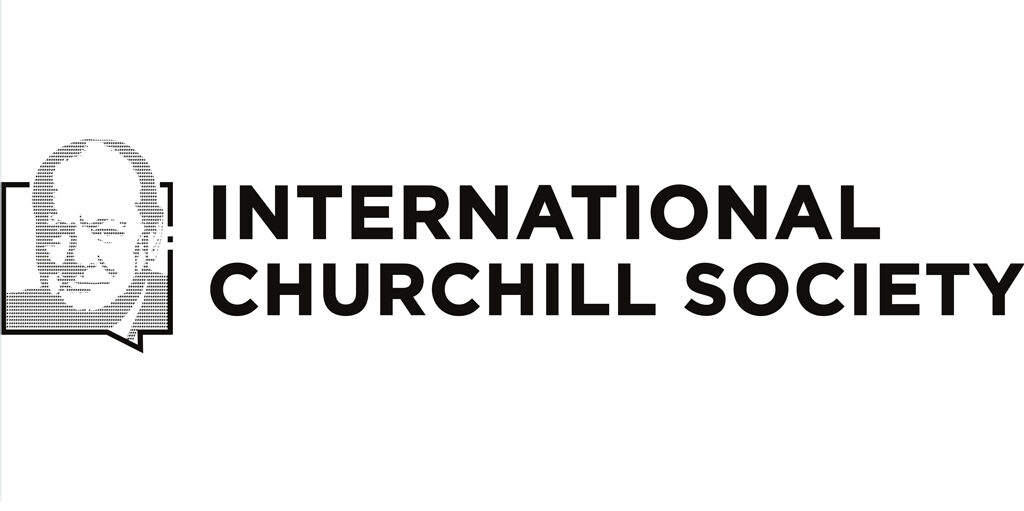
Finest Hour 159
Datelines

Winston Churchill, Parliament Square, London © Sue Lowry & Magellan PR
March 12, 2015
Finest Hour 159, Summer 2013
Page 06
QUOTATION OF THE SEASON
THE OLD RADICAL CAMPAIGN AGAINST EXPLOITATION, MONOPOLIES, UNFAIR RAKE-OFFS AND THE LIKE, IN WHICH I TOOK PART IN My YOUNG DAYS, WAS A HEALTHY AND NECESSARY CORRECTIVE TO THE SYSTEM OF FREE ENTERPRISE. BUT THIS GROTESQUE IDEA OF MANAGING VAST ENTERPRISES BY CENTRALISED DIRECTION FROM LONDON CAN ONLY LEAD TO BANKRUPTCY AND RUIN….”
—WSC, PERTH, SCOTLAND, 28 MAY 1948
A New Fiver: “The Winston”
CHARTWELL, KENT, APRIL 26TH— Finest Hour joins the praise for the new five-pound note depicting Sir Winston Churchill, based on his most famous photo, snapped by Yousuf Karsh after his speech to the Canadian Parliament in Ottawa on 30 December 1941 (FH 154). The new banknote will enter circulation in 2016.
Bank of England governor Sir Mervyn King said: “Churchill was a truly great British leader, orator and writer…a hero of the entire free world. His energy, courage, eloquence, wit and public service are an inspiration to us all…as it was to my parents’ generation who fought for the survival of our country and freedom under Churchill’s leadership….We do not face the challenges faced by Churchill’s generation. But we have our own.”
We were seated in the dining room at Chartwell, and while normally the eye would be drawn to the wonderful view across the gardens to the Weald of Kent, on this occasion they were all fixed on the newly unveiled design of the Churchill five-pound note. The only awkward question from the press was, why has it taken so long? Sir Mervyn pointed out this was actually an example of the Bank moving very fast. Churchill is only the sixteenth person to feature on a British bank note, and only the second from the twentieth century (the other being the composer Sir Edward Elgar).

2025 International Churchill Conference
The Karsh image is accompanied by depictions of the Houses of Parliament and the Nobel Prize for Literature, and Churchill’s 1940 promise of “blood, toil, tears and sweat.” In the view of Westminster, the Great Clock is at 3PM, the approximate time of his speech.
Wags said this might be read as a mission statement for the British economy. But yesterday the clouds lifted, the sun shone at Chartwell, and the Churchill family celebrated the arrival of the note that may become known as “The Winston.” Lady Soames received a copy of the design and said it was a great day for her, her family, and her country.
—ALLEN PACKWOOD
About the Note
The governor has the final say about who appears on a banknote, although the public can make suggestions. A wide range of historical characters appears on the reverse of Bank of England notes, with social reformer Elizabeth Fry the only current woman; WSC is the first statesman to join this select company.
The Bank of England issues nearly a billion banknotes each year, and withdraws almost as many from circulation. Notes are redesigned frequently to maintain security and prevent forgeries. Other security features include threads woven into the paper and microlettering. The most recent new design is the £50 note, which entered circulation in November. This features Matthew Boulton and James Watt, celebrated for bringing the steam engine into the textile manufacturing process.
While Bank of England notes are generally accepted throughout the UK, three banks in Scotland and four in Northern Ireland are authorised to issue banknotes. Pharmacologist Sir Alexander Fleming, poet Robert Burns, and tyre inventor John Boyd Dunlop appear on these. One commemorative £5 note, featuring football great George Best, proved so popular that the limited edition of one million sold out in ten days.
The image of Sir Winston Churchill has featured on currency before. In 1965, he became the first commoner to appear on a British coin, the famous Churchill crown (five shillings). He has also appeared on commemorative coinage of the Channel Islands, the Isle of Man, Gibraltar, Solomon Islands, Nauru, the Republic of Georgia, and the Benelux Countries. (See Devoy White, “Churchill Coins,” Finest Hour 131, Summer 2006.)
Nicholas Soames, Churchill’s grandson and MP for Mid-Sussex, said: “I think it is a wonderful tribute to him and an appropriate time. I can’t think of any more marvellous thing that would have pleased him more.”
—KEVIN PEACHEY, BBC NEWS
Editor’s note: Churchill was modest in public when he was subject to such honors, and our nomination for what he might say about the £5 note follows:
WSC’s Words of Thanks
STOCKHOLM, 10 DECEMBER 1953— “I am proud, but also awestruck at your decision to include me. I do hope you are right. I feel we are both running a considerable risk and that I do not deserve it. But I shall have no misgivings if you have none.”
This was Sir Winston’s response to the Nobel Committee for his Literature Prize, read by Lady Churchill (he was meeting in Bermuda with Eisenhower and Laniel).
Britain Helped Too
HOLLYWOOD, FEBRUARY 24TH— Britain was outraged over A r g o , “Best Picture” in Oscar-land, for inaccurate portrayal of British actions in the Iran hostage crisis.
“When I first heard about this film I was really quite annoyed,” said Sir John Graham, 86, a diplomat in Teheran at the time of the crisis, using the polite language of his profession.
When the American Embassy was overrun on 4 November 1979, five members of the staff escaped by a side exit. The remaining fifty-five would be held captive for 444 days. The leader of the escapees, Robert Anders, decided the best place to find refuge was the British Embassy. Arriving there, they found the embassy also surrounded by an angry mob. Anders took the group back to his flat, where he tried to contact a rescuer. In the morning the British Embassy rang, bravely informing the five Americans that it could give them refuge in its residential compound, known as Gulhak, and was sending a car for them. But British diplomats Martin Williams and Gordon Pirrie got lost negotiating the thronging streets. They were driving, of all cars, an orange 1976 Austin Maxi one of them had driven to Teheran from England. Desperate, the Americans again rang the British Embassy, only to be told that Iranians were “coming over the walls.”
After hours driving Teheran backstreets, Williams and Pirrie found Anders and his group and drove them nervously to the as-yet-untouched British residential compound. They arrived undetected and were warmly welcomed. CIA officer Antonio Mendez, who helped to mount the eventual rescue, recalls in his book, Argo: “The British were kind hosts, and offered them a house of their own, fed them a warm meal, even prepared cocktails.” The film mentions none of this.
The Daily Mail pounced: “You can imagine the outraged comments over industrial buckets of popcorn in theatres from Alabama to Alaska: ‘Goddamn Limeys! So that’s what we get for bailing them out during World War II.’”
To invoke another diplomatic phrase, that’s a bit over the top. The film’s error appears to be one of omission. Britain and the “special relationship” generally have a good and favorable press in America. Americans have been been complaining about historical lapses by Hollywood for years.
The Mail was right to object to another film, U-571, which cast the Yanks as capturing a vital German Enigma machine when it was really the Poles and British; and Braveheart, the Mel Gibson epic which depicted the English as “the rapacious, murderous oppressors of the noble and romantic Scots.” But the newspaper was wrong to pillory Saving Private Ryan for portraying “D-Day as an exclusively American effort.” That film was simply about American soldiers at Omaha Beach—which was the deadliest of the landing beaches.
Although I recognized Canada’s heroic Ambassaador Ken Taylor and his wife (excellent likenesses), I was not left with the feeling that Canada’s efforts had also been underplayed, though there were definitely some inaccuracies and omissions about the sterling performance of the Canadian Embassy. RML
Lease Hoe Farm
GODALMING, SURREY, MAY 25TH— Hoe Farm in Hascombe, Godalming, Surrey, where Churchill took up painting on a summer holiday after being dismissed from the Admiralty in 1915, is offered for let by Smiths Gore. A mere £10,500 per month will allow you to walk the grounds as he did, “stooped in anxious thought,” while examining the “painting hut” where Churchill completed four known oil paintings. Details on the web at http://bit.ly/13chYiP.
Dating from the 16th century, Hoe Farm is set in Gertrude Jekyll-landscaped gardens; the house itself was modified by Sir Edward Lutyens, and includes paddocks with a stable block. Twice in the 1980s/90s, Churchill Tours were hosted there by the late Arthur Simon, who then held the lease. On the first of these, Lady Soames had her first look at the place that had played a key role in her father’s development as an artist.
Errata, FH 157
Pages 6-7, “The Lion Is Back,” first entry, was an opinion piece and should be bylined RML or “The Editor.”
Page 15, column 1: delete “Hohenlinden,” which technically was Moreau’s victory (see page 4.)
Subscribe
WANT MORE?
Get the Churchill Bulletin delivered to your inbox once a month.


